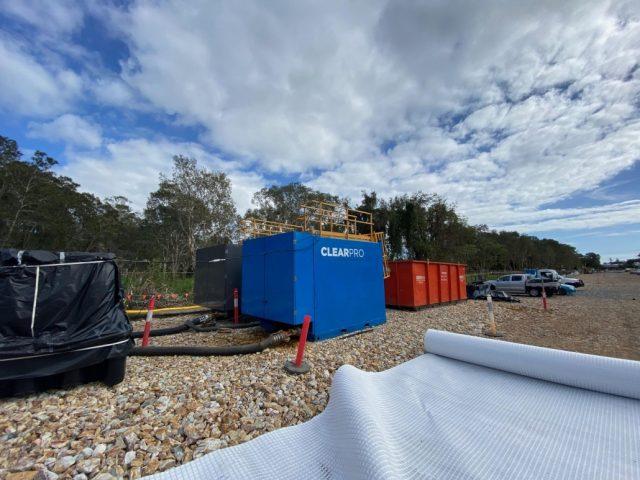Case Study: Byron Bay By-Pass
Date: February 2021
Location: Byron Bay, New South Wales
Products: Combigrid®/60 Q1 and Geofirma® AS540E
PROJECT BACKGROUND
The Byron Bay Bypass is a major infrastructure project that has been in the planning for over 30 years. Project construction commenced in July 2019 and finished in January 2021. The project opened to traffic on February 27, 2021.
The Bypass will;
improve connectivity and traffic flow between the eastern and western areas of Byron Bay
provide an alternative route that avoids the town centre
reduce the number of cars in the town centre daily by an estimated 30 percent
prioritise pedestrians over cars in the town centre
PROBLEM
The Bypass was approved and constructed following a rigorous environmental and planning process. There are times that development needs to be undertaken in areas that are of high environmental importance and this needs to be taken into account by all concerned.
In some cases, it is impossible to avoid a development’s impact on the local environment and in certain situations, councils and developers need to work out a way to offset the environmental impacts. This was the case for the Byron Bay bypass where the client agreed to undertaking a Biobanking project.
In simple terms Biobanking is a process where the impact of a development, or works, on the habitat of an area, is offset by the protection and enhancement of a larger area of habitat in a different location. (44.5 hectares of similar vegetation at Lilli Pilli and Wallum Place)
The route of the Byron Bay bypass includes an area of wetland which needed to be traversed so the bypass could achieve the desired reduction of traffic movements through the main town centre. Working with very soft saturated soils requires a robust design so the road pavement will last for its intended design life while still treading as lightly as possible on the surrounding environment during construction.
Construction was further challenged by a number of unknown site conditions such as old sewer mains, contaminated soils, poorer than expected ground conditions throughout parts of the project, and heritage footings that were uncovered and referred to Heritage NSW.
SOLUTION
Due the to the very soft subgrade conditions encountered during the early works portion of the project it was decided that a more robust and economical ground improvement design was required. A redesign was undertaken which included a nominal 500mm thick rock drainage blanket with Combigrid® 60/60 Geocomposite on the subgrade for reinforcement and separation/filtration including a Geofirma AS540E as a separation/filtration layer between the rock drainage blanket and the subbase.
Combigrid® 60/60 Geocomposite was selected based on the fact that it is a very stiff geocomposite exhibiting high strength at very low strains while providing separation/filtration to prevent the fines particles migrating from the very soft subgrade up into the into the rock drainage blanket layer. These two characteristics of Combigrid® Geocomposite are very important in road pavements where any pavement deflections can possibly lead to rutting and cracks forming in the pavement, potentially causing early pavement failures especially in high rainfall locations such as Byron Bay.

(Source: Clearpro)
RESULTS
The Contractor decided to go with a granular rock drainage blanket working platform as this allows for water to freely move in and out of the rock while not affecting the bearing capacity of the of the working platform.
An added benefit of using Combigrid® 60/60 Q1 for this environmentally sensitive project was to improve the overall carbon footprint of the working platform by reducing the depth of the rock drainage layer required by some 20-30% which in turn reduced the amount of natural resources to be quarried (high carbon footprint) and reduced the amount of delivery truck movements by the same amount.
The pavement is preforming as designed and traffic congestion has been reduced on the town centre roundabouts and roadways. Traffic along the popular Jonson Street has notably decreased and the bypass is offering a more efficient route between the eastern and western suburbs of Byron Bay.
Features of Combigrid® Geocomposite:
Reinforcement/stabilisation, filtration, separation, and drainage in just one product
Immediate interlock with fill material (no construction-related strain)
Excellent stress strain behaviour (high tensile stiffness)
High radial stiffness and high cyclic tensile stiffness
Robust against installation damage and chemical and biological attack

